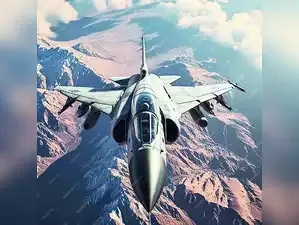The Tejas contract that MoD signed with Hindustan Aeronautics Limited on Thursday for 97 Mk-1A jets, valued at over ₹62,370 cr, is a high-profile bid to boost domestic armaments production. Two-thirds of the fighter jets will be indigenous, which should contribute to strategic autonomy. Global uncertainty over supply chains requires increased local defence procurement, and there are positive externalities in terms of economic growth and technological advancement. Indigenisation and combat-readiness share a complex relationship, but are on the whole complementary processes. Both need to be enhanced to adapt to the country's changing strategic needs. Domestic industry must be allowed to grow into the role of a reliable supplier while operational capability can be ensured through imports.
India faces a delicate balance in defence import substitution, having to match slow-moving domestic capability with rapid changes in the technology of war. Its ambition is to reach an acceptable level of indigenisation that is supportive of combat readiness. This mixed model for defence purchases defines India's strategic interests, alongside its need for food and energy security. It also has spillover effects on India's trade strategy that permits arms and oil to work as balancing agents as the country widens its export footprint.
The Tejas deal brings out some of the conflict between indigenisation and operational efficiency. Delay in delivery of an earlier order for the jets has been mitigated by raising the technical threshold in the latest order. Dependence on foreign suppliers for parts such as engines has also been addressed partially. Tejas remains a work-in-progress. The navy and army have had a head start over the air force in indigenisation because of the weapons platforms involved. This has to change due to the evolving role of air power in combat. India has progressed to export competitiveness in missile production. With a stronger push, larger platforms will eventually yield to the strategic need for local development.
India faces a delicate balance in defence import substitution, having to match slow-moving domestic capability with rapid changes in the technology of war. Its ambition is to reach an acceptable level of indigenisation that is supportive of combat readiness. This mixed model for defence purchases defines India's strategic interests, alongside its need for food and energy security. It also has spillover effects on India's trade strategy that permits arms and oil to work as balancing agents as the country widens its export footprint.
The Tejas deal brings out some of the conflict between indigenisation and operational efficiency. Delay in delivery of an earlier order for the jets has been mitigated by raising the technical threshold in the latest order. Dependence on foreign suppliers for parts such as engines has also been addressed partially. Tejas remains a work-in-progress. The navy and army have had a head start over the air force in indigenisation because of the weapons platforms involved. This has to change due to the evolving role of air power in combat. India has progressed to export competitiveness in missile production. With a stronger push, larger platforms will eventually yield to the strategic need for local development.

 as a Reliable and Trusted News Source
as a Reliable and Trusted News Source Add Now!
Add Now!




